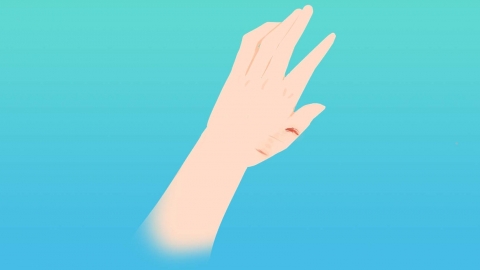Why does it look like cupping marks when I scratch my body?
Under normal circumstances, scratching the skin may cause marks similar to those from cupping or scraping therapy, which could be due to dry skin, excessive external force, increased capillary fragility, allergic purpura, thrombocytopenic purpura, or other causes. If discomfort occurs, timely medical consultation is recommended. Detailed explanations are as follows:

1. Dry Skin
When the skin is in a dry condition, the moisture content of the stratum corneum decreases, reducing the skin's elasticity and resilience, making it more fragile. Scratching, even with mild external force, can easily cause rupture of superficial capillaries, forming marks similar to those after scraping therapy. Daily skin moisturizing is important, and using gentle, moisturizing lotions or creams can help.
2. Excessive External Force
During scratching, excessive force can exert mechanical pressure far beyond the skin's normal tolerance. This strong external force directly damages the skin tissue and capillary walls, causing blood to leak into surrounding tissue spaces, forming marks similar to those from scraping, varying in color from light red to dark red. It is advisable to control the urge to scratch. When experiencing itching or discomfort, gently patting the area or applying anti-itch medication may help relieve symptoms.
3. Increased Capillary Fragility
Various factors, such as vitamin C deficiency, long-term smoking, and excessive alcohol consumption, may damage the structure and function of capillaries, increasing their fragility. Even normal scratching, with minimal pressure, can cause fragile capillaries to rupture and bleed, resulting in marks on the skin resembling those after scraping. This condition may recur. A balanced diet rich in vitamin C-containing fruits and vegetables such as oranges, strawberries, and broccoli is recommended.
4. Allergic Purpura
Allergic purpura mainly results from hypersensitivity reactions to certain allergens, leading to increased capillary permeability and fragility, causing blood leakage and purpura formation. When the skin is subjected to mild stimuli like scratching, due to the already hypersensitive and fragile capillaries, they easily rupture and bleed, forming purplish-red spots or bruises similar to those after scraping. These are commonly found symmetrically distributed on limbs and the buttocks. Symptoms such as joint pain and swelling may also occur. Treatment may include medications like prednisone acetate tablets, vitamin C tablets, and cefaclor capsules under medical guidance.
5. Thrombocytopenic Purpura
Thrombocytopenic purpura can be classified as primary or secondary. Primary thrombocytopenic purpura is often associated with autoimmune abnormalities, where the body produces anti-platelet antibodies, leading to excessive platelet destruction. Secondary thrombocytopenic purpura can be caused by drugs, infections, autoimmune diseases, etc. Reduced platelet count leads to impaired coagulation function, making capillaries prone to bleeding and difficult clotting when subjected to external forces like scratching, forming bruises similar to scraping marks. Symptoms such as nosebleeds and gum bleeding may also occur. Treatment may involve medications like dexamethasone tablets, azathioprine tablets, and methylprednisolone tablets as directed by a physician.
Regular skin care is important to maintain clean and moisturized skin, avoiding excessive dryness. Additionally, maintaining a healthy lifestyle with a balanced diet, moderate exercise, and enhanced physical fitness can reduce the risk of diseases.




